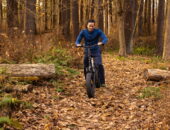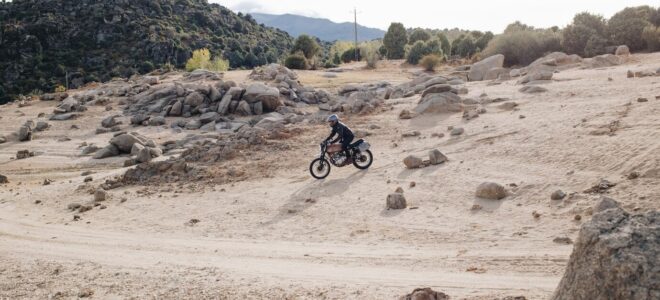
Dirt biking is an exciting way to explore outdoor terrains while enjoying the thrill of off-road motorcycling. However, starting as a beginner can feel a bit intimidating without the right guidance. From choosing your first dirt bike to preparing for your maiden ride, this guide will walk you through everything you need to know.
Choosing Your First Dirt Bike
Getting the right dirt bike is crucial for a smooth and enjoyable introduction to the sport. Several factors come into play when deciding which bike to buy, and understanding these will help you make the best choice. Besides the bike, let’s not forget about equipment that protects it, like new dirt bike graphics. Consider buying these, as well, to keep your bike looking new.
Selecting the Right Size
Your bike should feel comfortable to sit on and control. A good rule is to ensure your feet can touch the ground while sitting on the bike. This allows for better stability and control, especially when you’re stopping or riding on uneven terrain. Larger bikes may seem appealing, but they can be harder to manage if you’re just starting.
Engine Capacity: Start Small
Beginners are often advised to go for a bike with an engine capacity between 125cc and 250cc. Smaller engines are lighter, easier to control, and provide sufficient power for someone learning the basics. Opting for a bike that’s too powerful may make it harder to learn and could lead to unnecessary spills.
Two-Stroke vs. Four-Stroke Engines
Two-stroke engines are typically more lightweight and deliver quick bursts of power, which can be thrilling but also harder to manage for beginners. Four-stroke engines, on the other hand, offer smoother and more predictable power delivery. For someone new to dirt biking, a four-stroke engine often provides a gentler learning curve.
Gear Essentials for Safety
Safety gear is non-negotiable. Proper equipment not only reduces the risk of injury but also enhances confidence. Key items to include:
- Helmet: Choose one certified for dirt biking with a snug but comfortable fit.
- Boots: High-quality dirt bike boots protect your feet, ankles, and shins from impacts and abrasions.
- Gloves: These offer grip and shield your hands from blisters or scratches.
- Goggles: Protect your eyes from dust, mud, and flying debris.
- Body Armor: Chest protectors, elbow guards, and knee pads can help absorb impact during falls.
Prepping for the First Ride
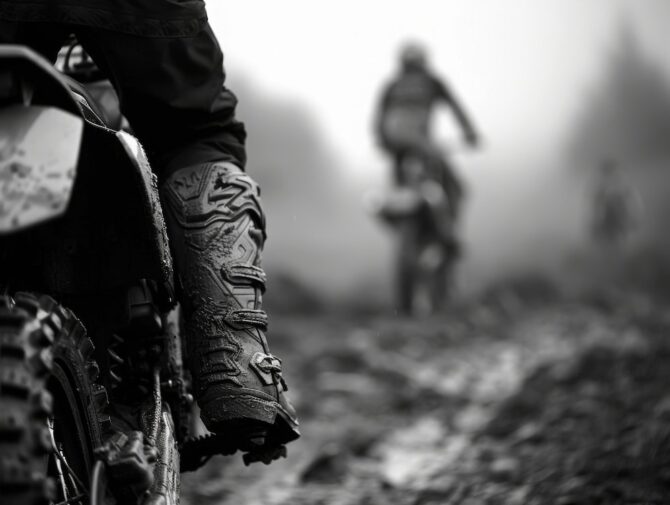
Source: freepik.com
Proper preparation can set the tone for a successful ride. Before you hit the trails, a little planning and practice go a long way in building confidence and ensuring safety.
Basic Bike Maintenance
Performing a quick check of your dirt bike is essential before every ride. Inspect tire pressure, tighten the chain if needed, and check oil levels to avoid mechanical issues mid-ride. Cleaning your air filter and ensuring the brakes are working properly are also important steps to keep your bike running smoothly.
Starting on Beginner-Friendly Terrain
The terrain you choose for your first ride can significantly impact your experience. Flat dirt tracks or wide-open fields with minimal obstacles are ideal for beginners. They provide the perfect environment for practicing basic controls without the added challenge of uneven ground or steep inclines.
Practicing Fundamental Movements
Spend time practicing how to mount and dismount the bike safely. Familiarize yourself with using the throttle, clutch, and brakes. Doing this in a controlled setting will make you feel more prepared when riding in real conditions.
The First Ride: Key Skills to Practice
Once you’re ready to ride, focus on building foundational skills. Start slow and practice in a safe environment to get comfortable with the bike’s controls and your riding posture.
Gradual Acceleration and Braking
Ease into riding by gradually increasing speed. Sudden acceleration can make the bike harder to control, especially on loose surfaces. Similarly, practice using the brakes to come to a smooth and controlled stop. Learn the difference between front and rear brakes, as over-reliance on one can affect balance and safety.
Shifting Gears Smoothly
Learning to shift gears efficiently is an essential part of dirt biking. Begin in a low gear and focus on smooth transitions as you accelerate or decelerate. Many beginner bikes have user-friendly gear systems designed to make this process easier.
Proper Riding Posture
Maintaining the correct body position can greatly enhance your control over the bike. Stand slightly on the foot pegs when riding over rough terrain, keeping your knees bent and gripping the bike. Lean forward while climbing hills and shift your weight back when descending to maintain balance.
Confidence-Building Tips for New Riders
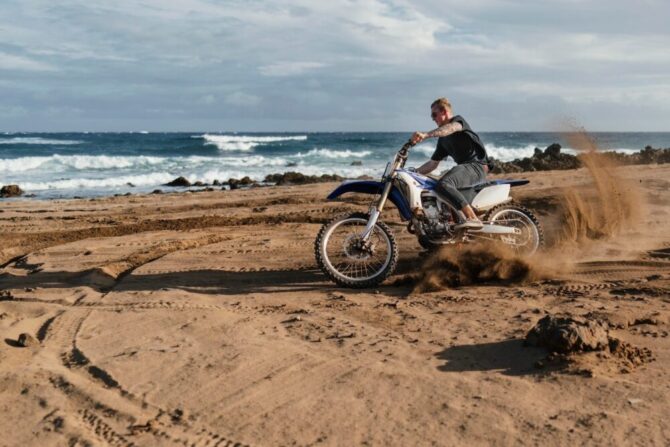
Source: freepik.com
Gaining confidence as a dirt biker takes time and consistent effort. The key is to focus on steady improvement while keeping safety a priority.
Ride in Short Sessions
Begin with shorter riding sessions to avoid fatigue, which can impact your concentration and control. Take breaks to rest and hydrate, especially during long practice sessions. Riding while tired increases the risk of accidents, so listen to your body.
Ride with Others
Joining a group of experienced dirt bikers or friends who share the same enthusiasm can be incredibly beneficial. Riding in a group helps you learn from others, provides a safety net, and makes the experience more enjoyable.
Tackle Challenges Gradually
It’s easy to get excited and want to try difficult trails right away, but patience is key. Mastering the basics on simpler terrain will set a strong foundation for handling more advanced trails in the future.
Common Mistakes Beginners Should Avoid
Dirt biking is a learning experience, and making mistakes is part of the process. Being aware of common errors can help you avoid unnecessary setbacks.
- Skipping Safety Gear: Some beginners underestimate the importance of protective equipment. Always gear up before riding, no matter how short the session may seem.
- Rushing to Advanced Terrain: Starting on difficult trails can lead to frustration and increase the likelihood of accidents. Stick to beginner-friendly areas until you’re ready for more challenges.
- Neglecting Bike Maintenance: Regular checks can prevent breakdowns and keep you safe. Don’t overlook routine maintenance, even if your bike seems to be running fine.
- Overconfidence: While enthusiasm is great, overconfidence can lead to risky behavior. Ride within your limits, especially in the early stages.
Progressing After Your First Ride
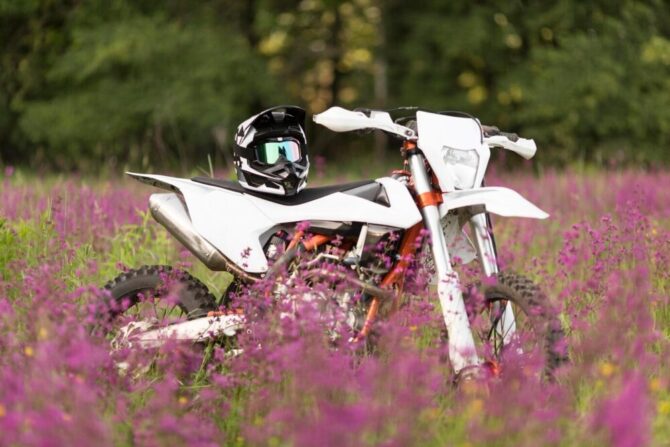
Source: freepik.com
Your first dirt biking experience is just the beginning. There’s a whole world of trails, challenges, and skills to explore.
Setting Goals
Setting achievable riding goals is a great way to stay motivated. Whether it’s learning how to corner more effectively or tackling a specific type of terrain, having clear objectives will keep you focused.
Expanding Your Skills
Once you’re comfortable with the basics, start exploring advanced techniques like cornering, jumping, and navigating tighter trails. Invest time in learning from tutorials, workshops, or experienced riders.
Maintaining Your Equipment
A well-maintained bike is key to consistent performance. Clean your bike after every ride to prevent dirt build-up, inspect critical components regularly, and address issues promptly to ensure your bike stays in top condition.
In Summary
Dirt biking is a thrilling and rewarding hobby that offers endless opportunities for adventure and skill development. By starting with the right bike, focusing on preparation, and practicing the basics, you’ll set yourself up for success. Each ride will build your confidence, and before you know it, you’ll be tackling trails like a pro. Safe riding!


